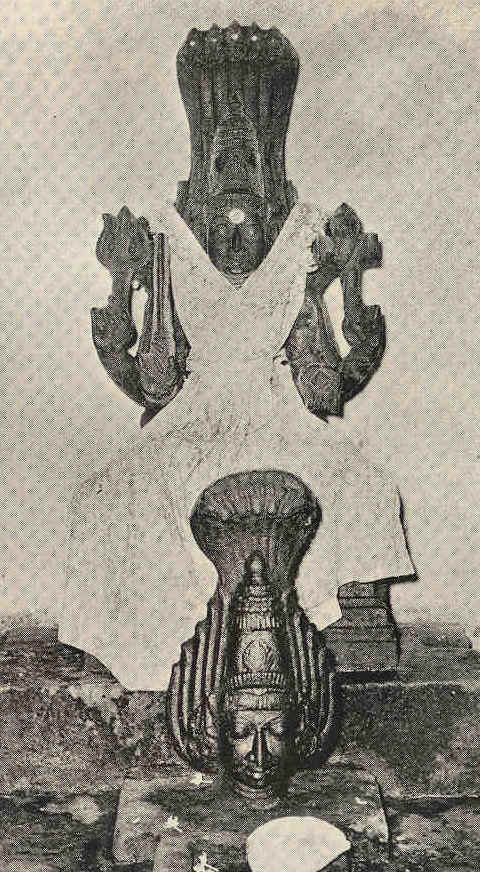The worship of nature or cosmic energy in the
form of the divine mother is something native to populations all over the
Indian subcontinent. Regardless of the region in question, some variation of Shakti
worship exists. Thus the worship of Bhagawati
is unique to Kerala while temples dedicated to Maariamman
are seen throughout Tamilnadu.

Shakti - graama devataa or the goddess native to a
village is usually represented iconographically as a face with arms, the earth
constituting the rest of the body. It is believed that the village goddess when happy
brings peace and prosperity while when angry brings disease and drought. The peaceful
manifestation of the graaama-devata is referred to as Seetala while the
angry manifestation is referred to as Jari_maari. Animal sacrifices have
been offered traditionally to graama devataas for generations; however this practice is on
the wane.
Maariamman temples are seen throughout the length and breadth of
Tamilnadu; the best known of these are the Maariyamman temple at Samayapuram and the Karumaariyamman
temple at Tiruverkadu near
Chennai. These temples have risen beyond the stature of localized village temples and they
attract visitors from throughout the state.
The legend of Renuka Parameswari is associated with Maariyamman.
Legend has it that Jamadagni Muni, the father of Parasuraama,
an incarnation of Vishnu accused his wife
Renuka of infidelity and ordered his children to behead her. All of his children with the
exception of Parasuraama refused to obey his orders. A distraught Renuka
fled for her life and sought refuge in the hut of a villager by name Yellamma.
Parasuraama beheaded both women and then requested his father to restore them to life. In
the process of restoring his mother to life, the heads and the headless bodies of Yellamma
and Renuka got mixed up, and the restored women got elevated to the status of folk
Goddesses held in great regard throughout south India. Yellamma shrines in Karnataka as
well as Yellaiamman shrines in Tamilnadu depict images of the goddess with similar
iconography.
Closely associated with the worship of the graama devata is the reverence accorded to snakes.
Snakes are very closely associated with the element earth and are
believed to be aware of the secrets of life and death. Snakes are commonly associated with
fertility. It is not uncommon to see snake hills held in reverence in the
vicinity or within the precincts of the temple of a graama devata. Actually, Shakti
herself is conceptualized as the mystical Kundalini serpent which lies within the body of
every being. The Kundalini is the potential that can be aroused through ritual postures
and mantras.
Maanasa Devi associated with serpents and fertility is held in worship in
northern India.

